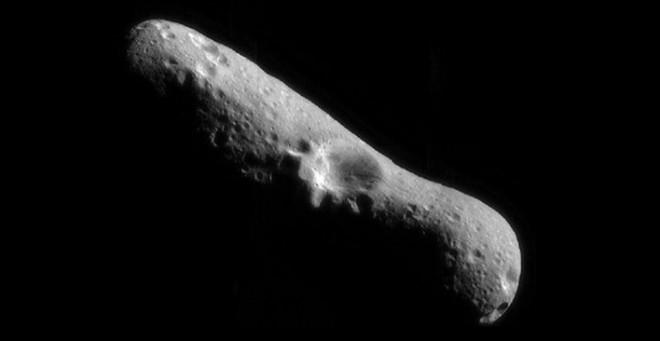
Marking Earth's closest encounter with a space rock until 2027, a huge asteroid will pass the planet next week at binocular distance.
The rock is estimated to be as big as half a kilometre. The asteroid, named "2004 BL86", will pass through the Earth safely on 26 January at a distance of 745,000 miles or 1.2 million kilometres, which is three times the distance between the Earth and the moon. The next rock to come this close to Earth will be in 2027. In 2027, "1999 AN10" may come as close as 19,000 miles.
"While 2004 BL86 poses no threat to Earth for the foreseeable future, it's a relatively close approach by a relatively large asteroid, so it provides us a unique opportunity to observe and learn more," Don Yeomans, of NASA's Near Earth Object Program Office at the Jet Propulsion Laboratory in Pasadena, California, said in a statement.
The asteroid will be visible to amateur astronomers with small telescopes and strong binoculars. "I may grab my favorite binoculars and give it a shot myself," said Yeomans. "Asteroids are something special. Not only did asteroids provide Earth with the building blocks of life and much of its water, but in the future, they will become valuable resources for mineral ores and other vital natural resources. They will also become the fueling stops for humanity as we continue to explore our solar system. There is something about asteroids that makes me want to look up," Space.com reports.
Astronomers have planned to track the asteroid with radar when it passes over Earth. This will be done using massive dish-shaped antennas at NASA's Deep Space Network in Goldsone, California, and the Arecibo Observaory in Puerto Rico.
The radar data will help provide the first imaging of "2004 BL86", said JPL principal investigator Lance Benner. He said: "At present, we know almost nothing about the asteroid, so there are bound to be surprises," The Register reports.
The radar "echo" will look like a sonogram and may help provide an insight into the asteroid's three-dimensional shape, its rotation and also its internal density.
It has been learnt that at present, the space rock is visible to sky-watchers in the Southern Hemisphere via strong telescopes; and, as it approaches the Earth, it will be visible to those in the Northern Hemisphere as well.
The asteroid was first detected on 30 January, 2004, with the 1-meter LINEAR telescope in New Mexico.














